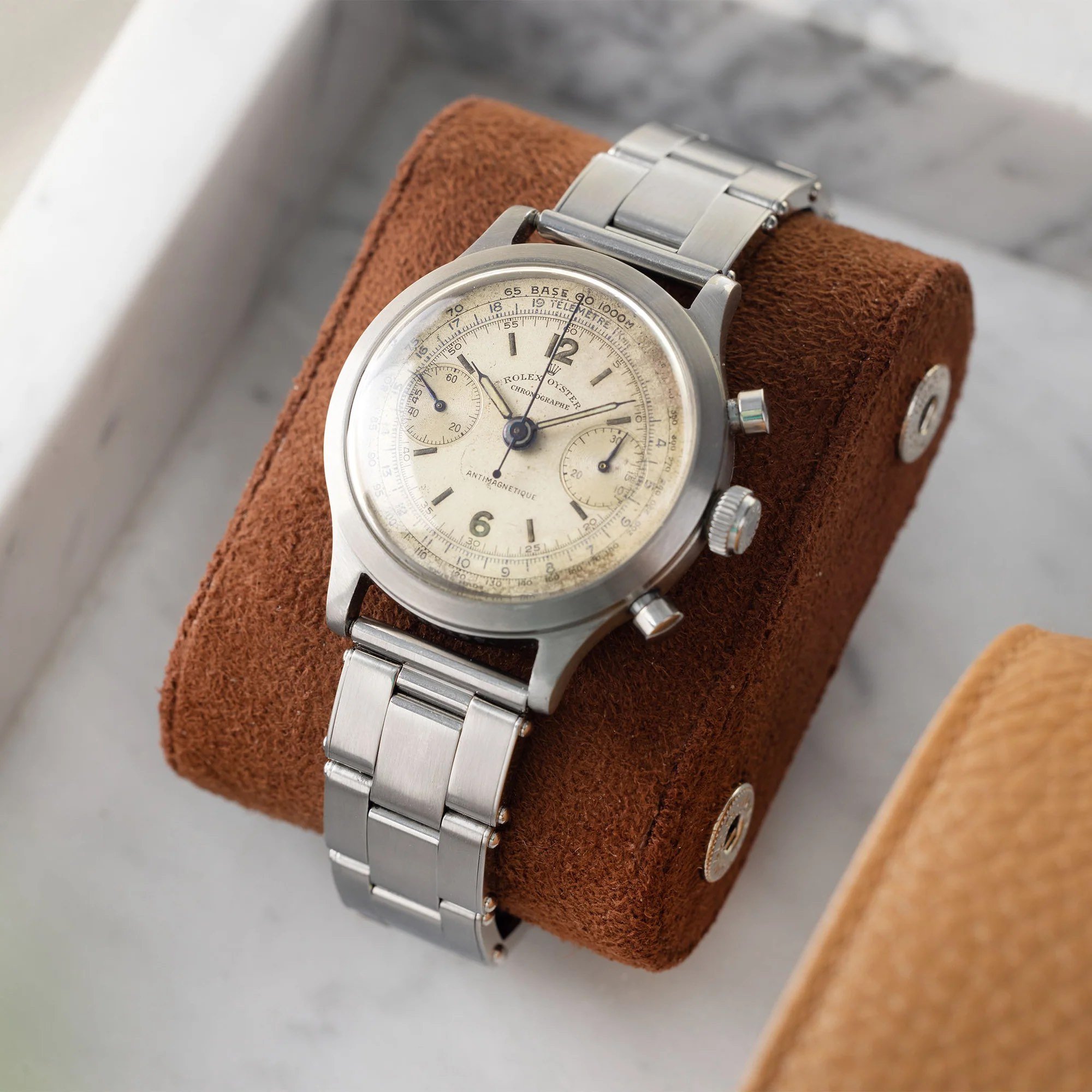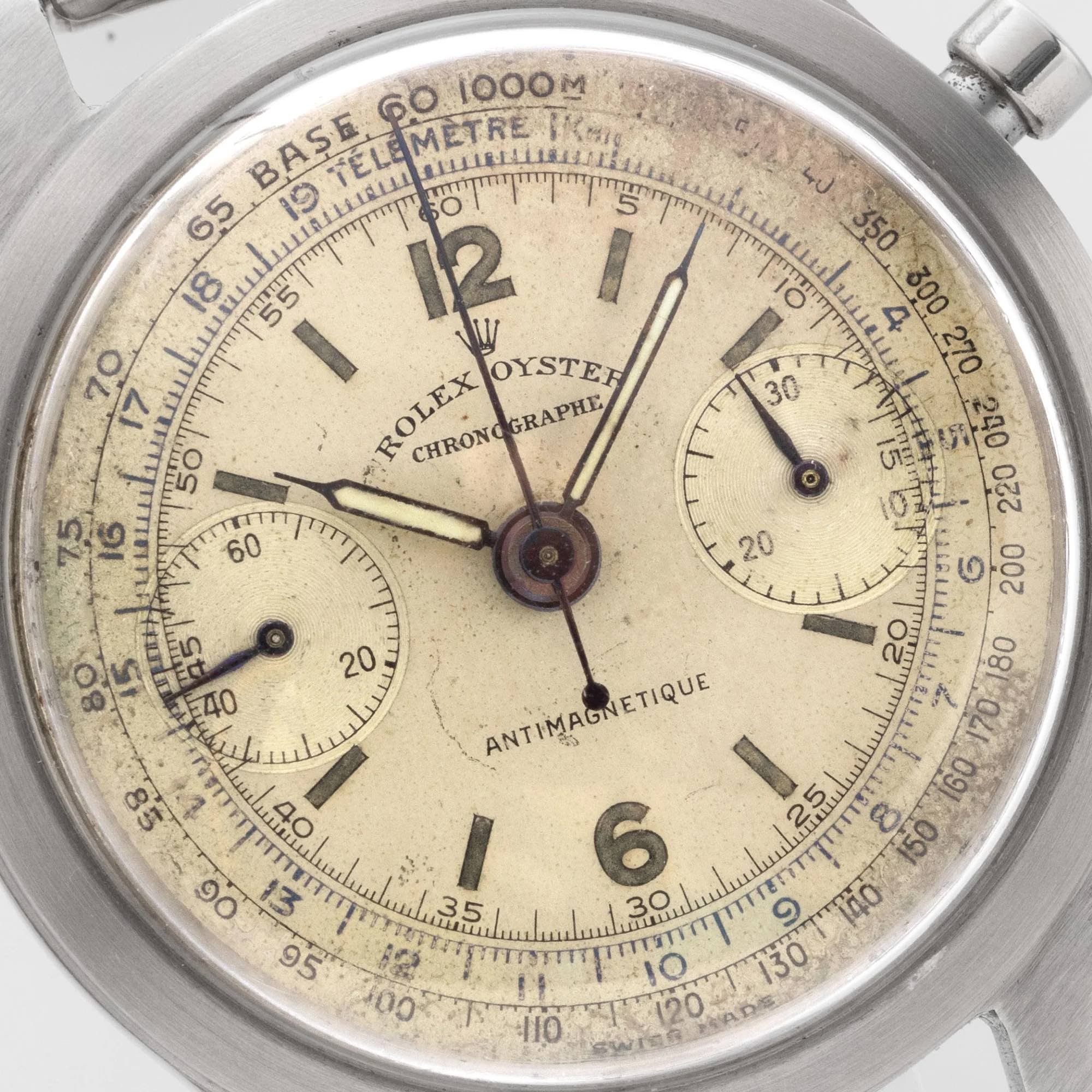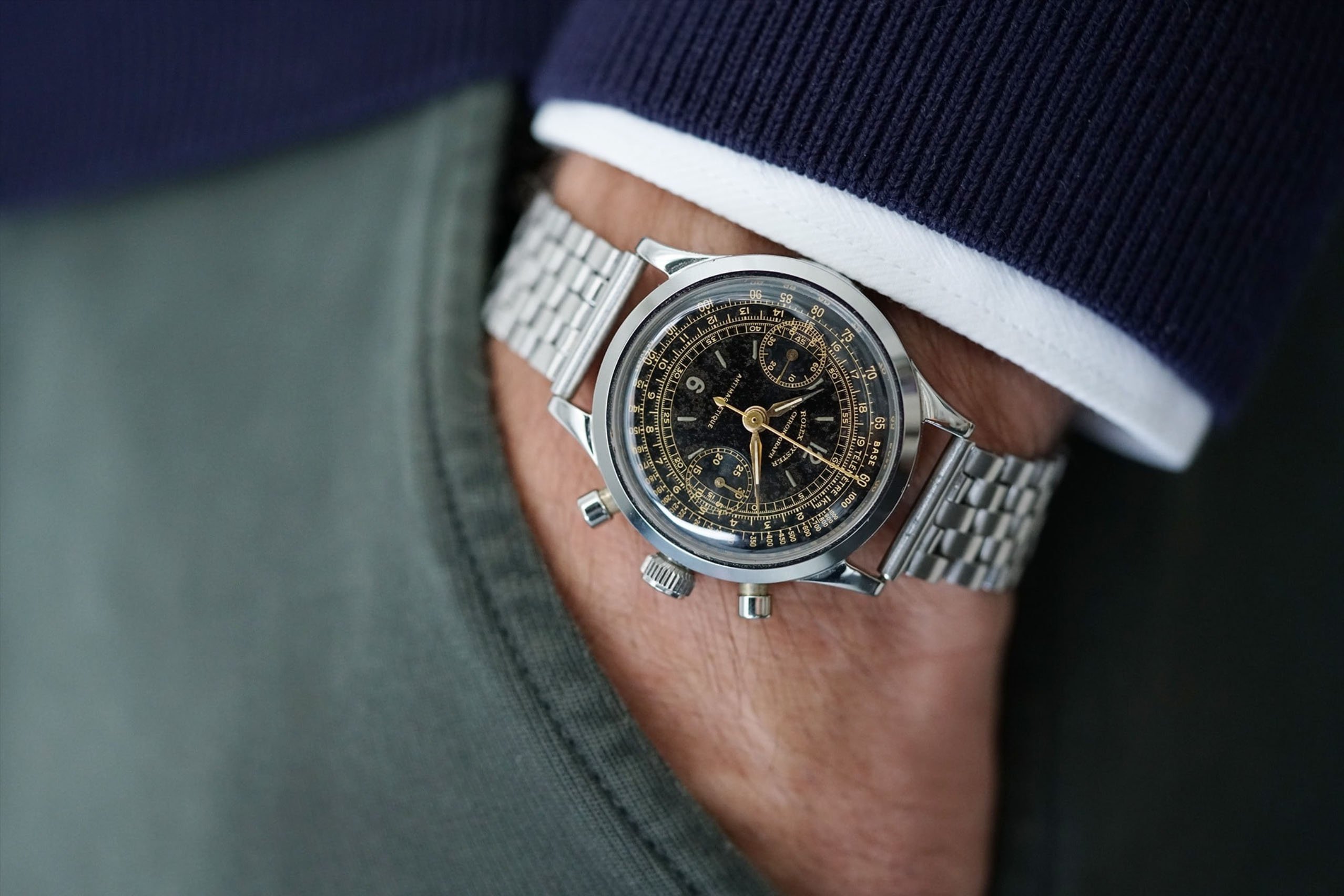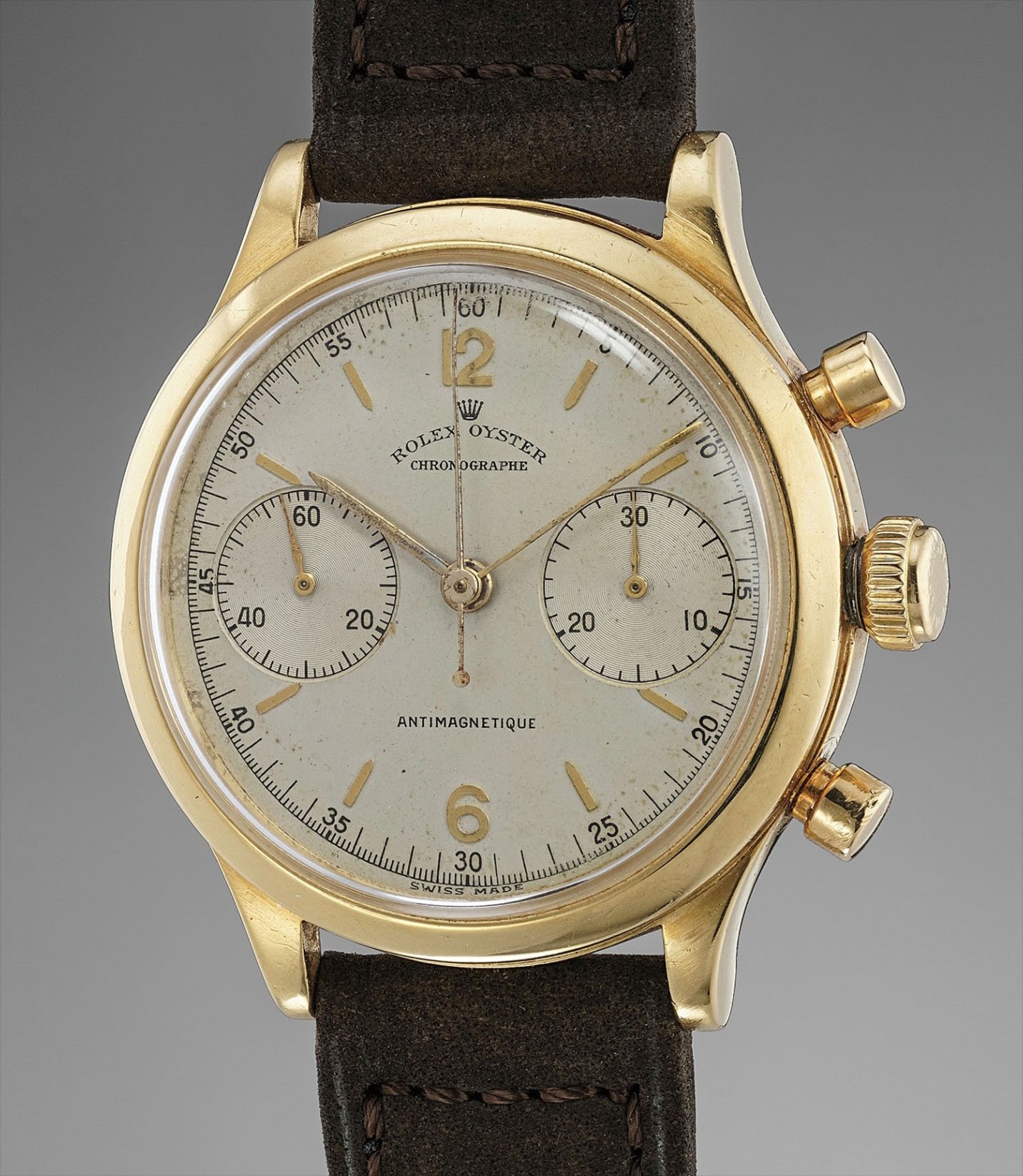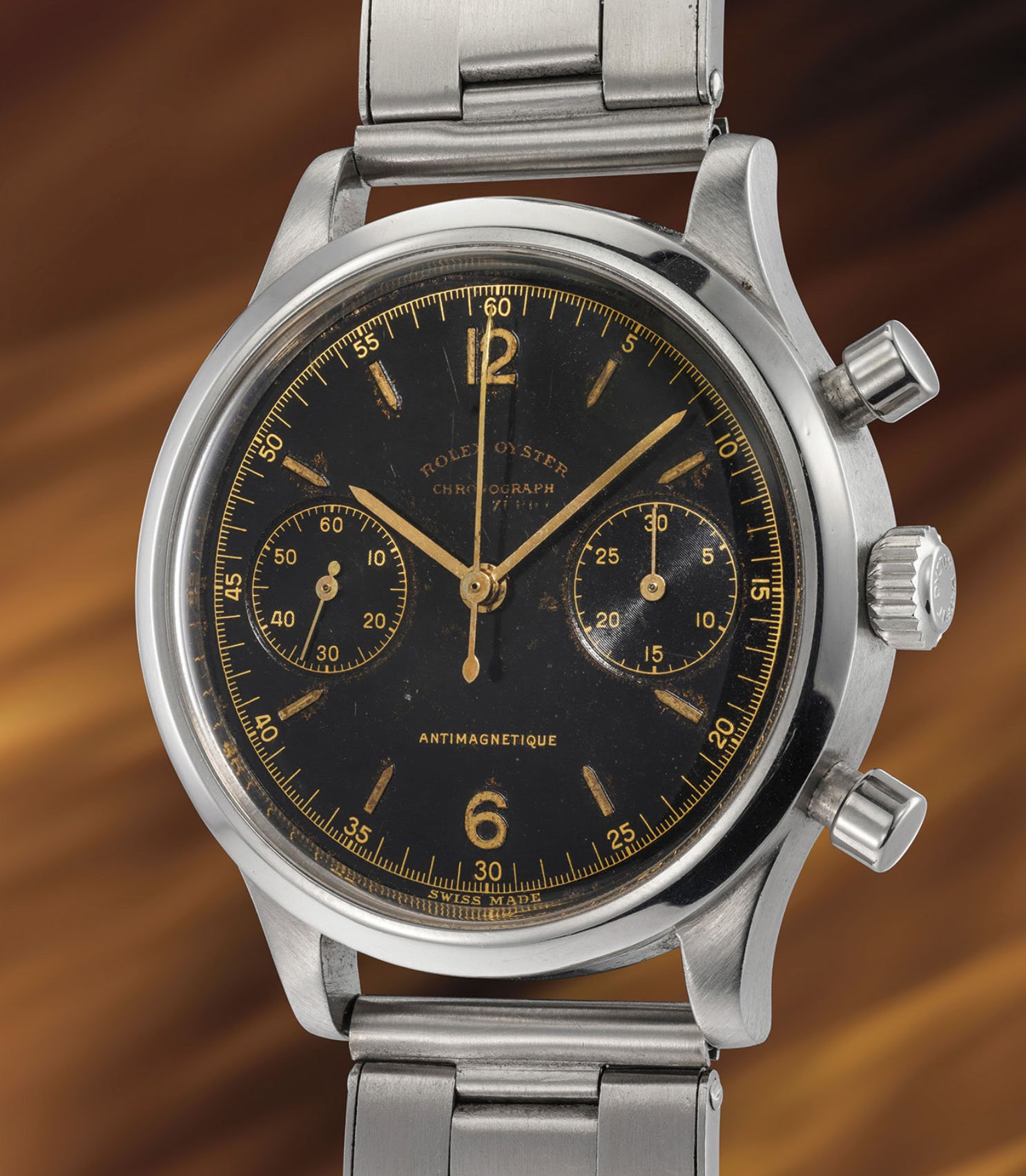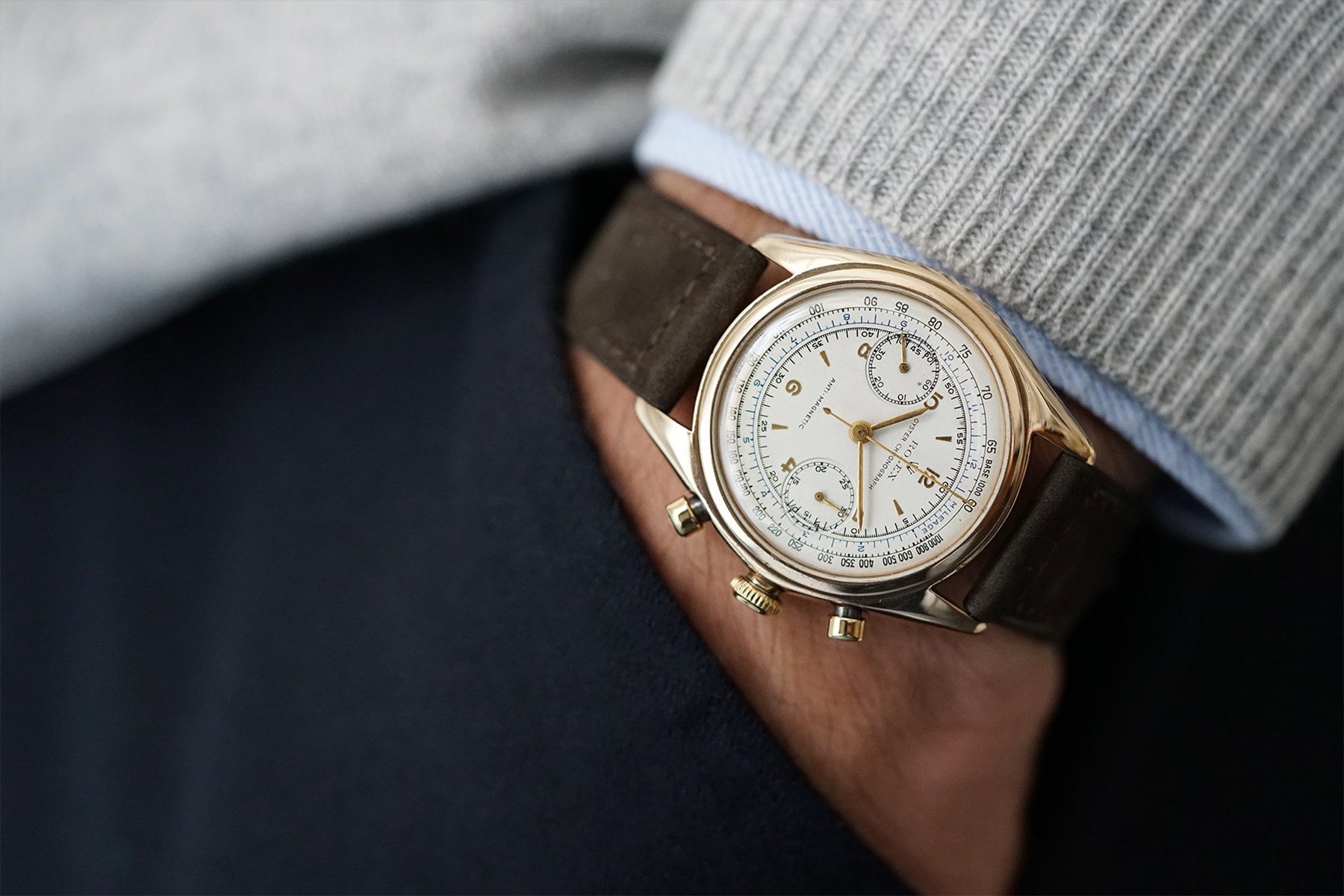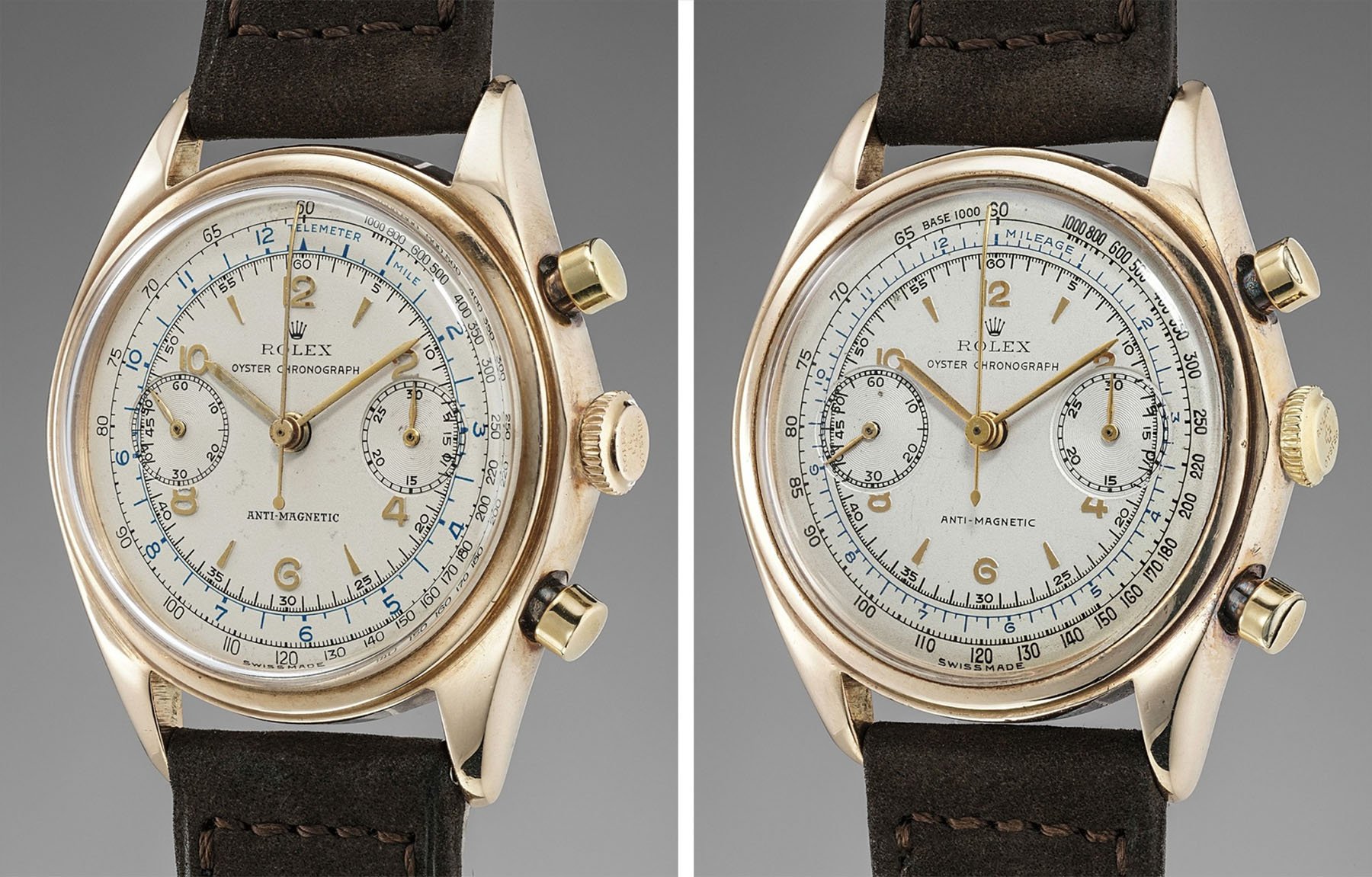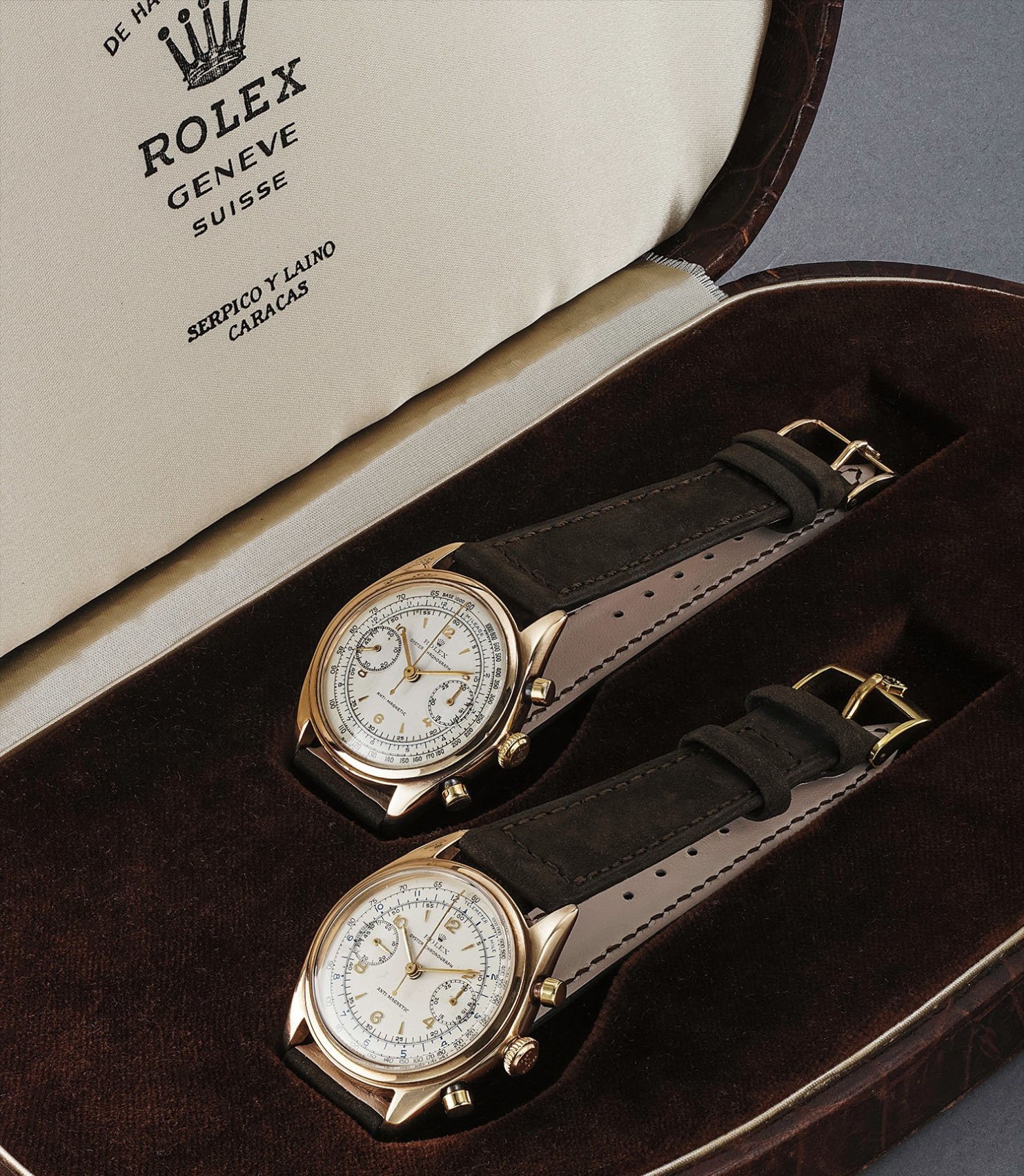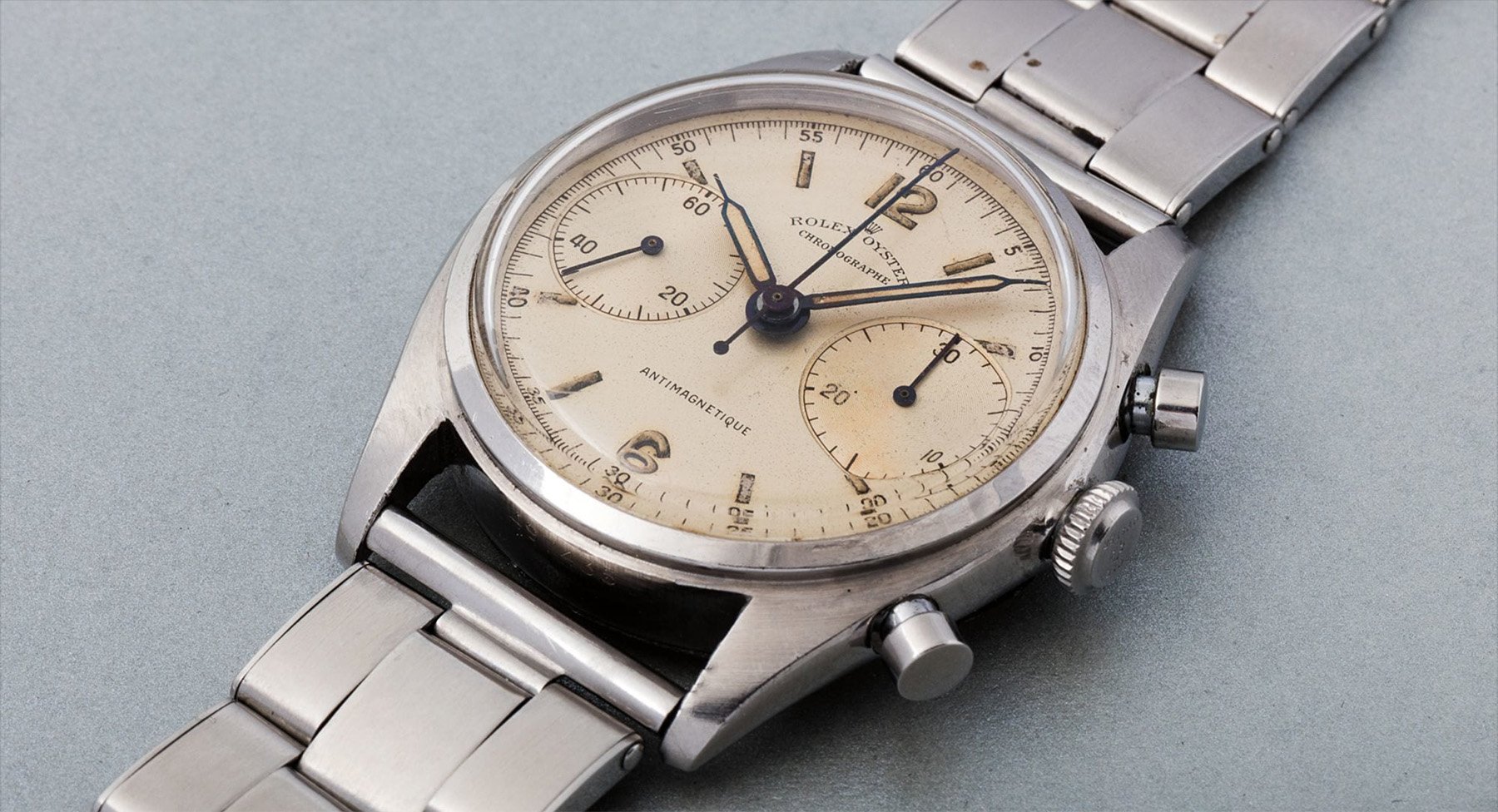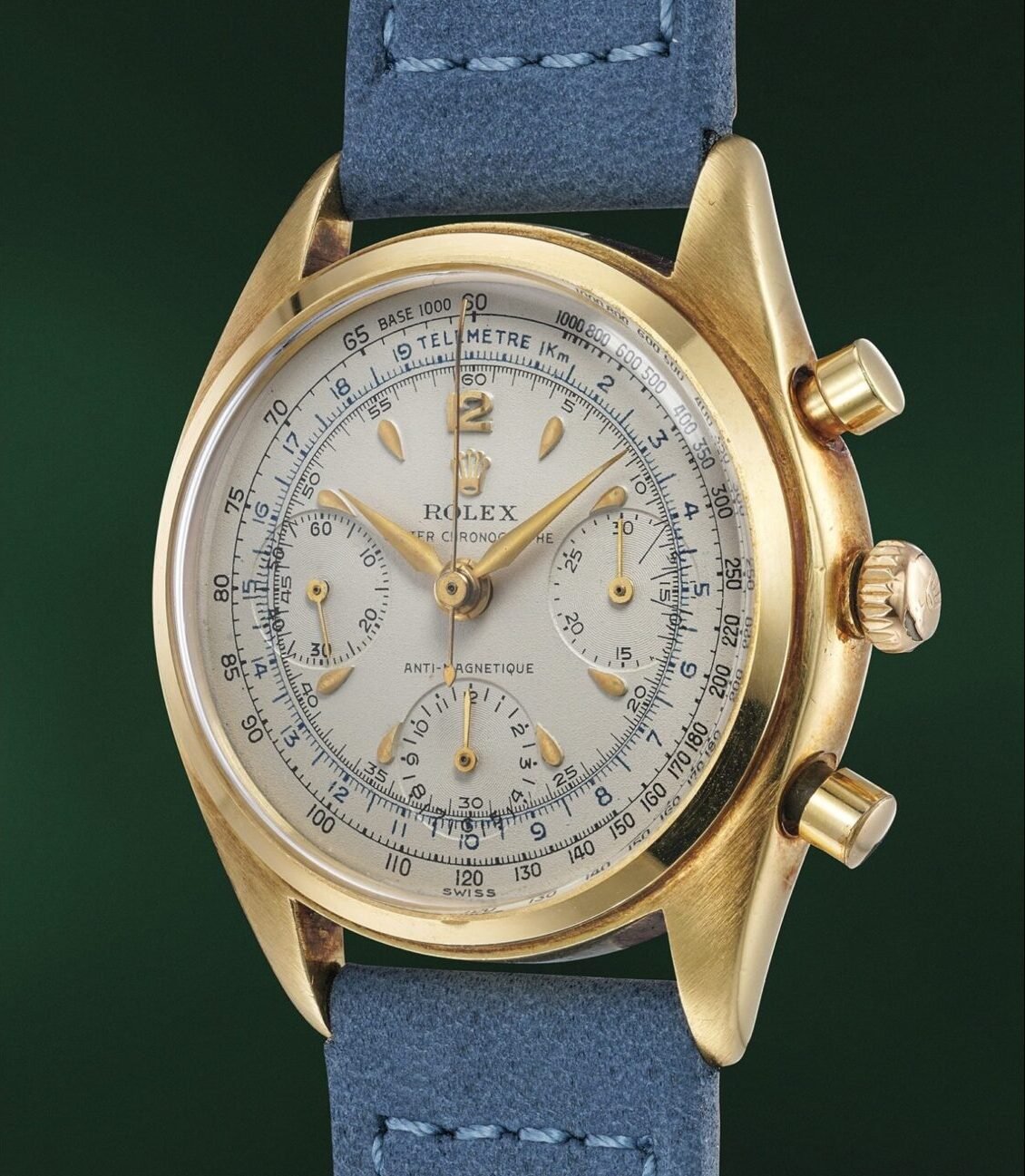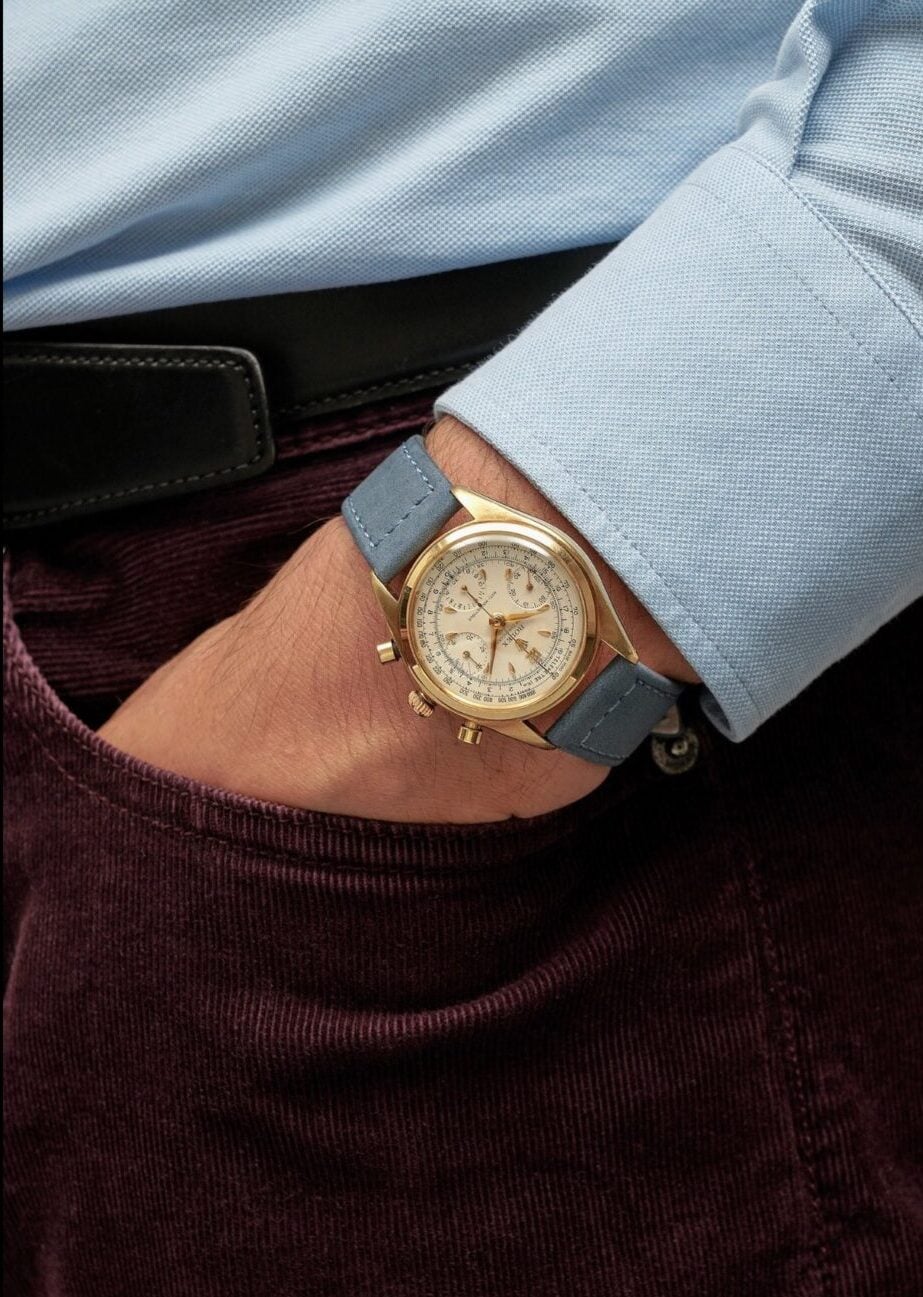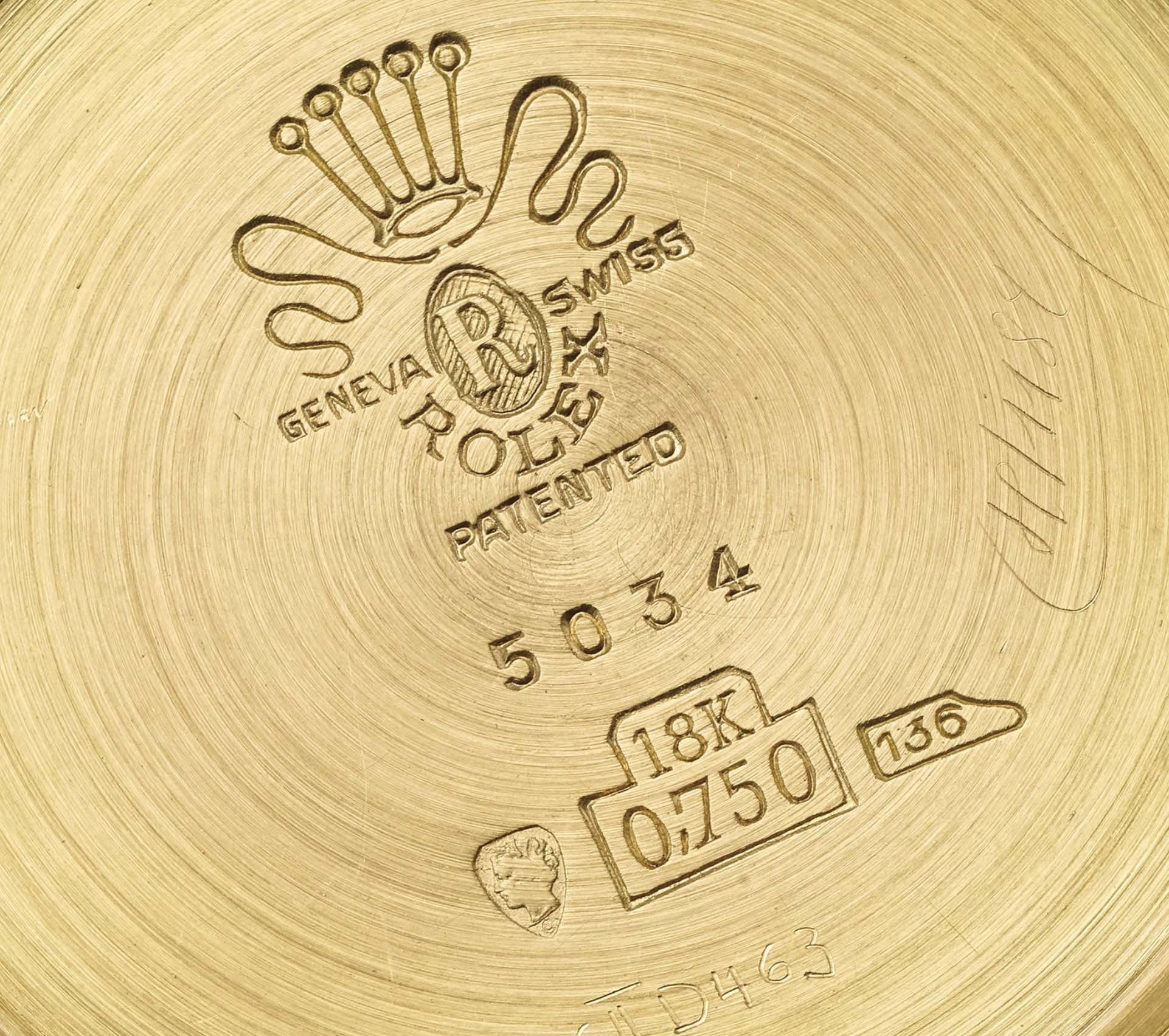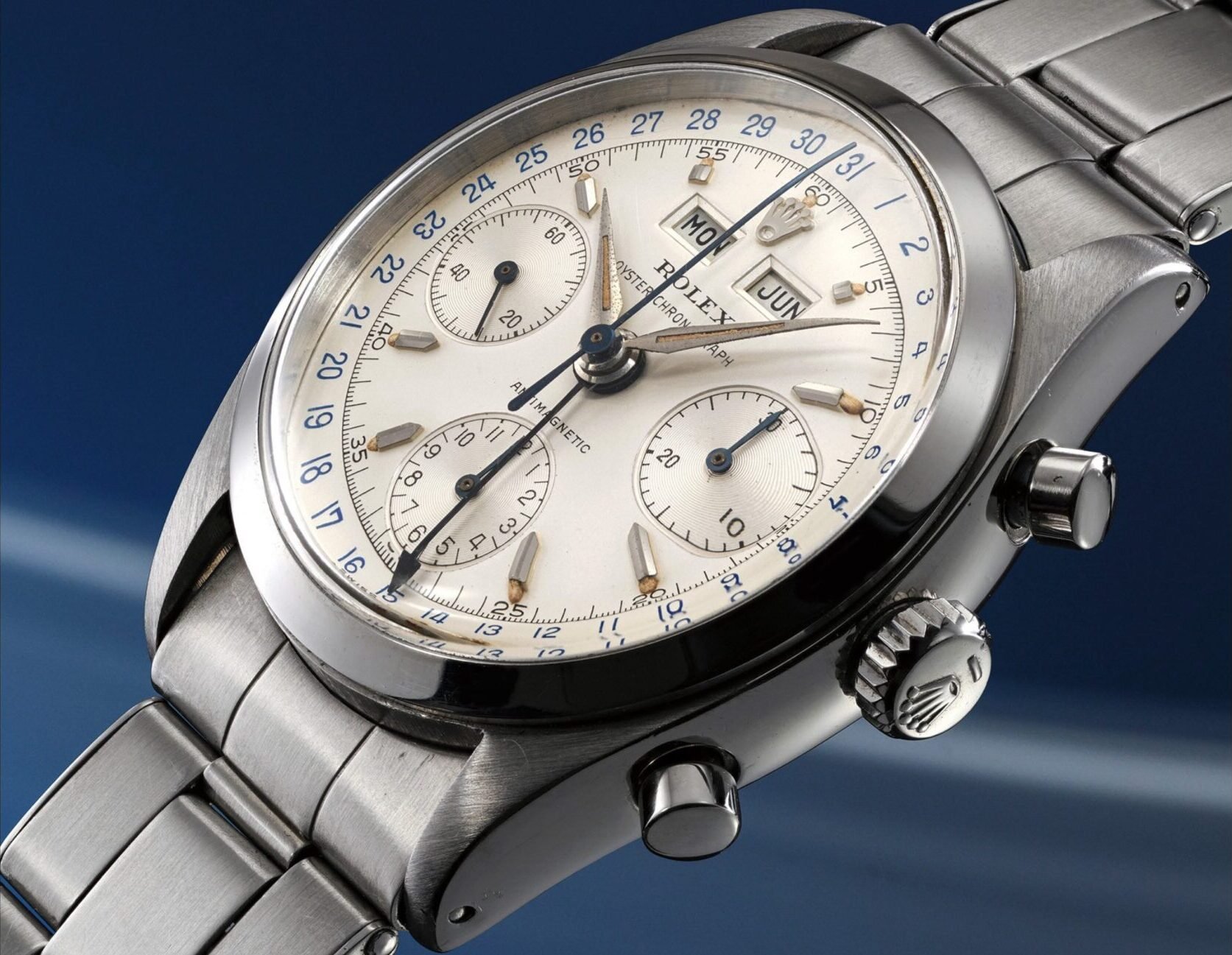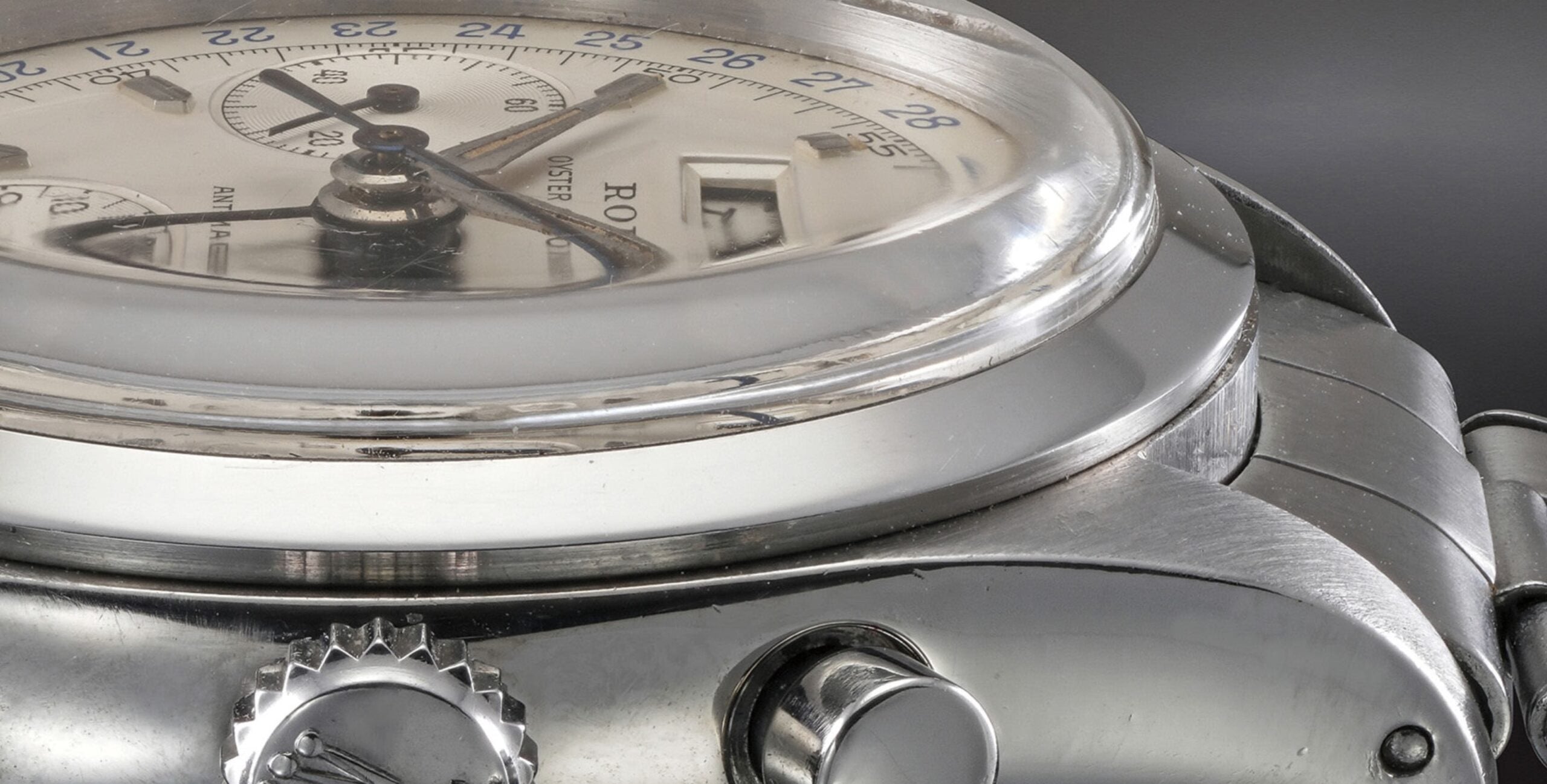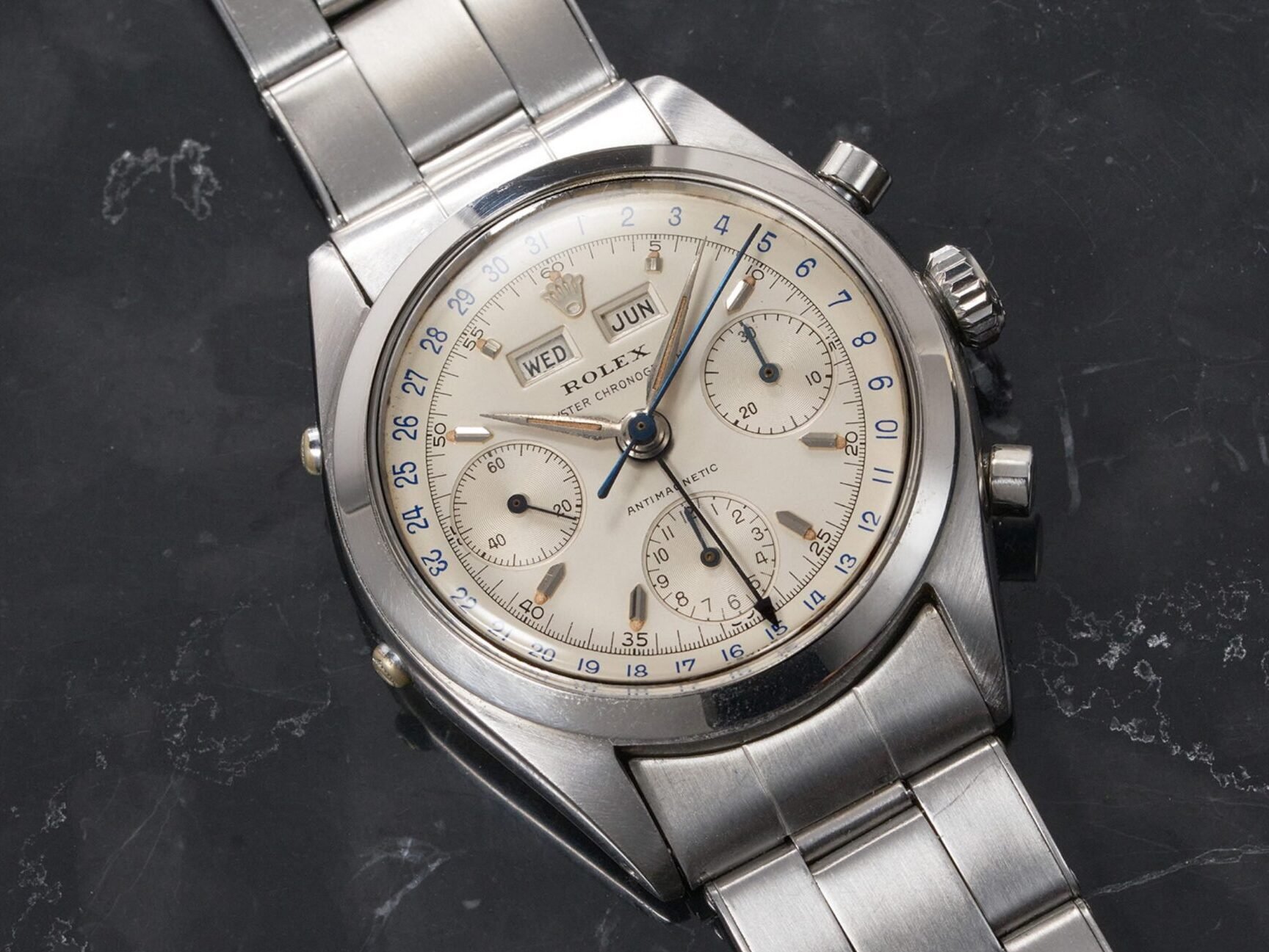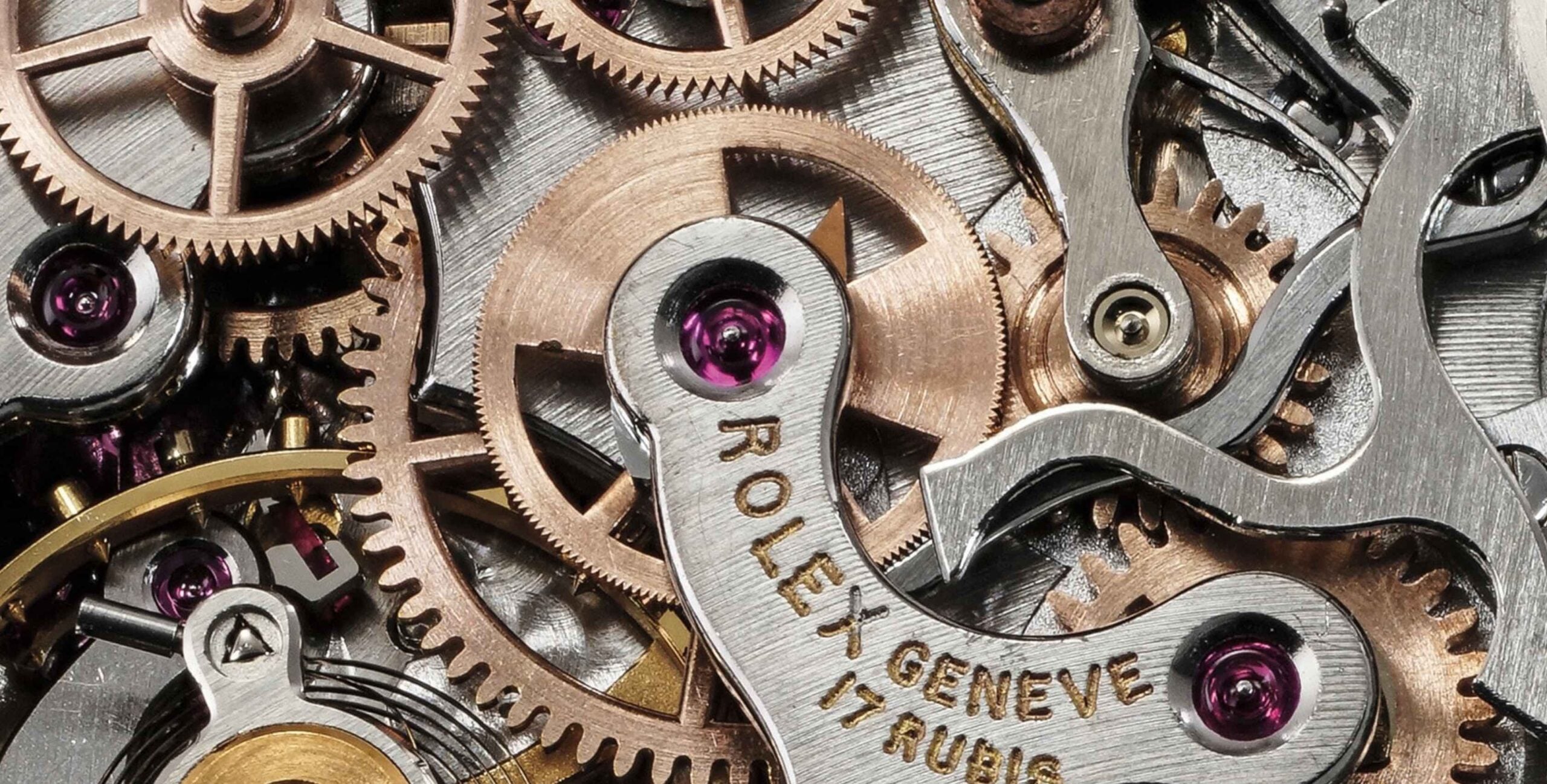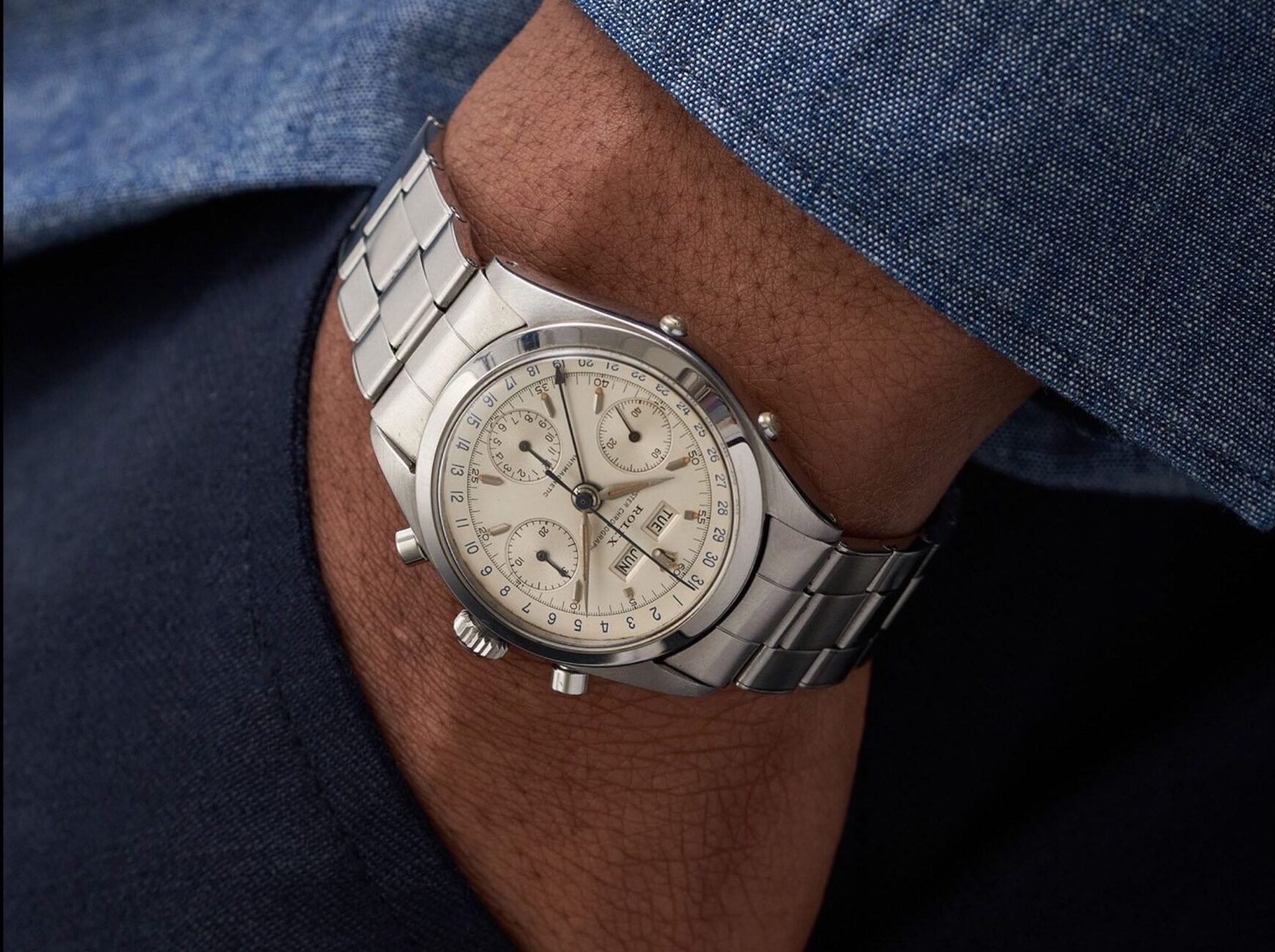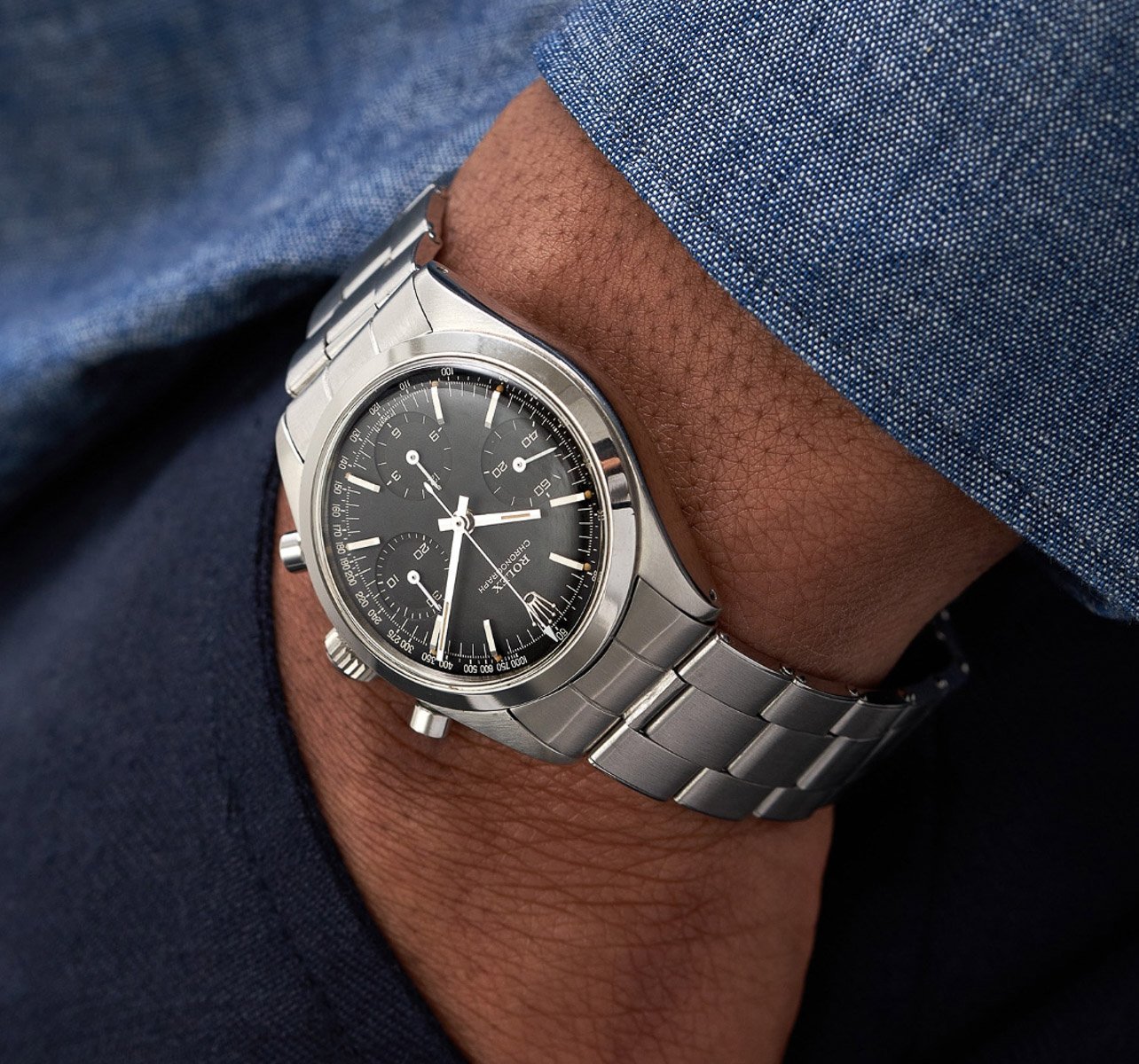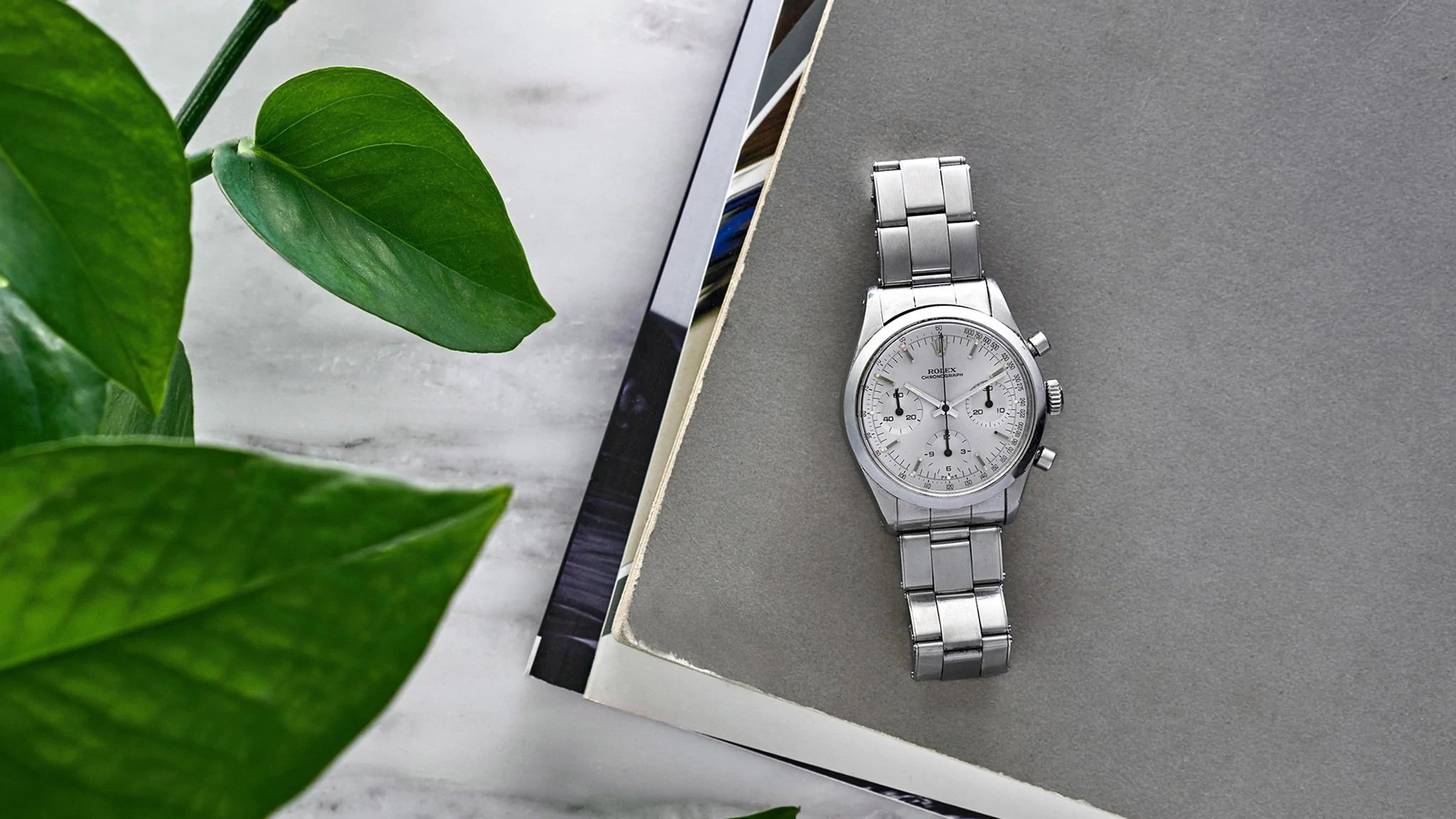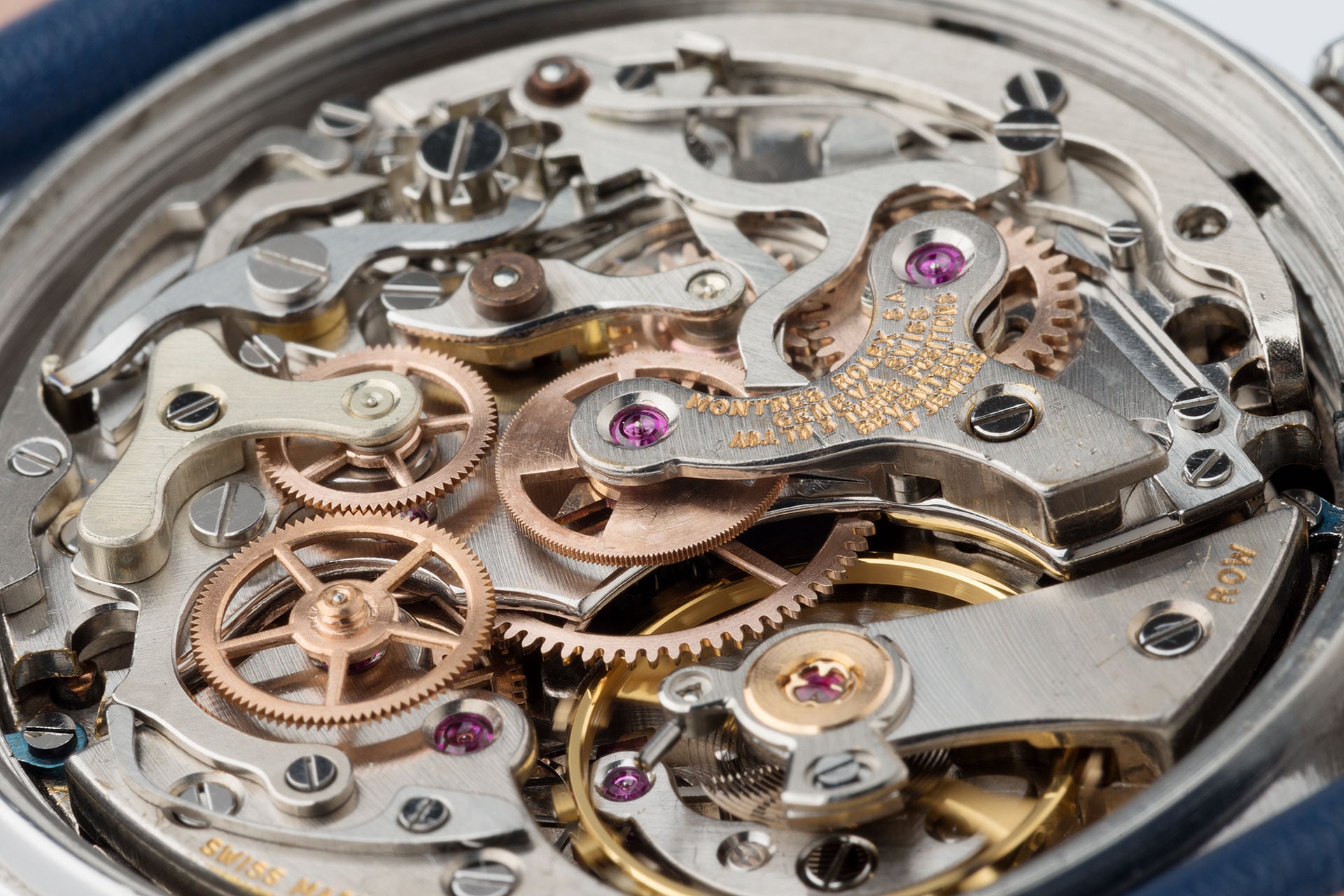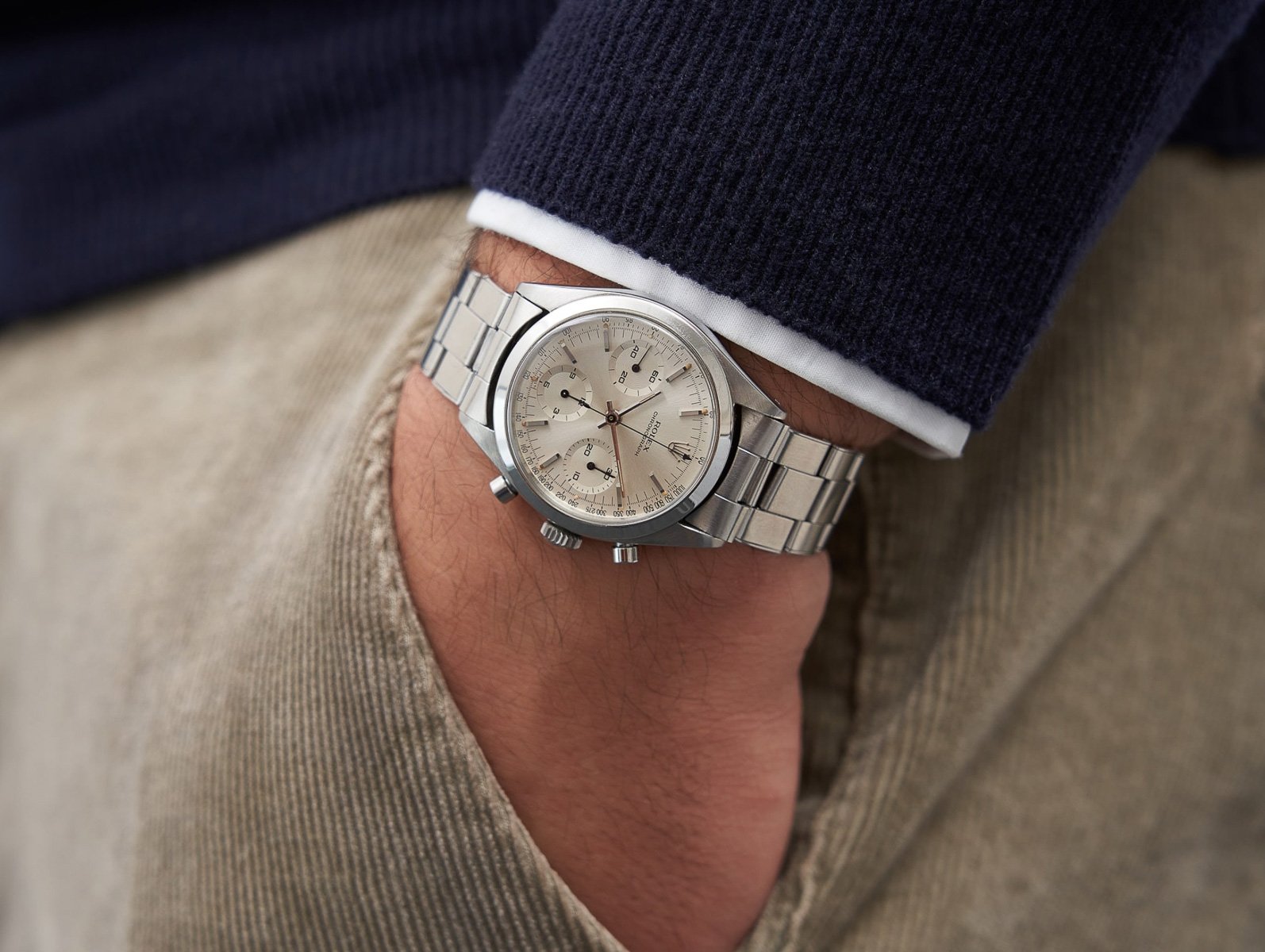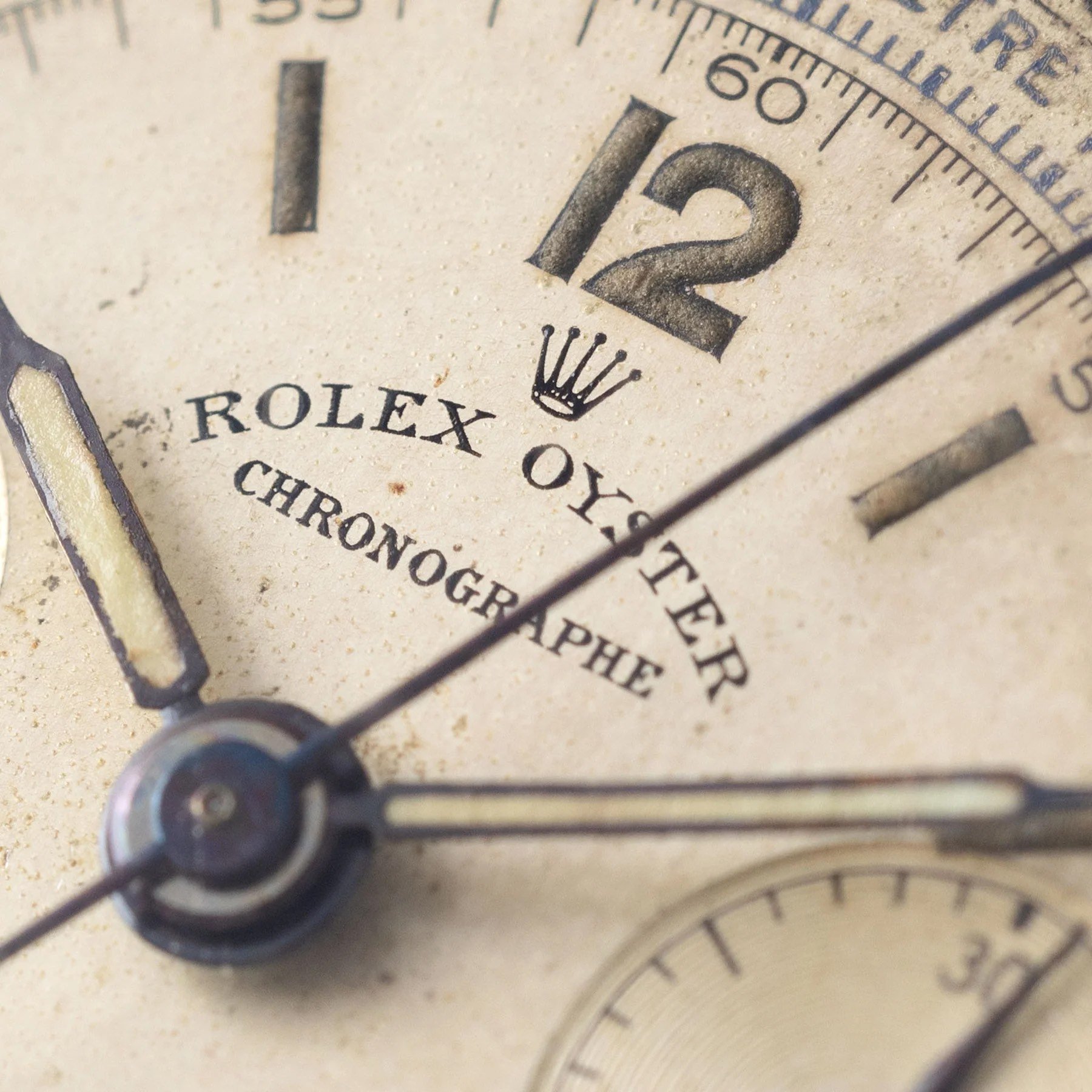Fratello’s Top 5 Pre-Daytona Rolex Chronographs
Another Friday, another list! This week, we’re highlighting the best pre-Daytona Rolex chronographs. While most watch fans know of such models’ existence, it’s not something we focus on often. This is for obvious reasons. The legacy of the Daytona has become one of the industry’s greatest success stories, so that is where the focus is. Plus, the Daytona is still in the brand’s collection, which makes it relevant to talk about. But that doesn’t mean the vintage Rolex chronographs aren’t. That’s why we wanted to highlight five classic Rolex chronographs from the pre-Daytona era this week.
If you follow our Top 5 lists every week, you know I’ve gone down the Rolex rabbit hole lately. This year, I hope to buy a vintage Rolex Datejust, so I’ve been specifically reading and searching for the one Datejust 1601 with my name on it. But once I started reading about vintage Rolex models, I couldn’t stop at the Datejust. As most of you know, vintage Rolex is a world full of wonderful watches that stand out for many reasons. Pre-Daytona Rolex chronograph models are a series of watches I’ve been reading about lately. They are some of the most interesting watches the Genevan brand has ever created, which led us to pick five for this week’s list.
Rolex Chronograph ref. 3525
Let’s start this list with a proper oldie. The Rolex ref. 3525 debuted in 1938 and goes by the nickname “Monoblocco” because the 35mm case and bezel were one solid piece of steel or gold. Two-tone (steel/gold) variants’ cases were not one piece of metal, but Rolex fans also call them Monoblocco as it’s simply easier. This specific reference is also the first known Rolex chronograph with an early or transitional Oyster case featuring a water-resistant screw-in back and screw-down crown. This development was pivotal in shifting chronographs from dressy watches to more functional daily wearers and, later on, sporty tool watches.
Ref. 3525 is also famous as a Prisoner of War watch that Rolex made available to officers of the Allied forces during WWII. Many brands did the same, but people still remember Rolex for offering this service. On top of that, this chronograph was a very reliable watch that often survived those dark times flawlessly. Rolex equipped the watches with the Valjoux 23 caliber. This column-wheel chronograph movement operated at 18,000vph and offered 48 hours of power reserve.
Many variations of the Rolex ref. 3525
Rolex produced a variety of dials for the two-register ref. 3525. Due to both their layouts and colors, some variations are worth mentioning. The most common dial colors were white and black. However, as you will understand, the colors vary greatly nowadays due to discoloration. You will find examples with dials that have some beautiful patina. In terms of design variations, the most common version features a triple-scale layout, which includes tachymeter and telemeter scales encircling the railroad minute scale. On the white dials, the tachymeter scale was black, while the telemeter scale was blue for some nice contrast. The black-dial versions feature gilt markers that make the watch look super classy.
Another two-register dial design was much easier on the eye. It simply had a 60-second/minute scale on the perimeter. This design was also available for silver and black dials and significantly changed the watch’s presence. Overall, the ref. 3525 is one of the most interesting vintage Rolex chronographs. It comes with several interesting historical stories and still looks amazing.
The brand stopped producing the ref. 3525 in 1946, right after World War II. After that, Rolex started making chronographs with more modern case shapes, as we will see later in this article. Since the 3525 typically pops up at auctions, it can easily fetch anything between €35K and €85K depending on the case material and condition. What that will get you is one of Rolex’s greatest historical storytellers.
Rolex Chronograph ref. 4500
In 1946, Rolex released the ref. 4500, which we could call the follow-up to the ref. 3525. The watch is also the first Rolex chronograph with an Oyster case as we know it today. As you can see, this watch’s case design has the familiar Oyster style that we recognize from the early Datejust models. The ref. 4500 featured a 36mm case with notably straighter lugs than the 3525.
Rolex produced the ref. 4500 in stainless steel, a combination of gold and steel, 9K pink gold, and a full 18K yellow gold. The two-tone version is particularly interesting to see with its gold bezel and crown. Also, the 9K pink gold versions are incredibly rare and beautiful, classy chronographs.
The same Valjoux 23 movement but a different dial
Inside the ref. 4500’s case, Rolex used the same manual-winding Valjoux 23 as the ref. 3525. But while the movement remained, the dial changed a bit. It did keep the intricate multi-scale design with a blue telemeter scale within the black tachymeter scale on the dial’s periphery. However, Rolex used applied markers and numerals for the dial of the ref. 4500.
But it would not be Rolex if there weren’t various versions. We have also seen dials without applied markers but luminous ones instead. In the ref. 4500’s short production run from 1946 until 1949, Rolex predominantly produced the watch with white dials, but you will also see an occasional version with a black dial. Furthermore, it’s possible to find the simplified dial designs of the ref. 3525 for the 4500. Asking prices for the Rolex Chronograph ref. 4500 are roughly between €25K and €50K and heavily dependent on the condition. The ones in great condition easily fetch even more at auctions, where they pop up occasionally.
Rolex Oyster Chronograph ref. 5034
The illustrious Rolex Oyster Chronograph ref. 5034 is an ultra-rare bird. Rolex introduced this reference in 1949, and it was gone from the catalog in 1950. Consequently, it is one of the most sought-after vintage Rolex chronographs. It is usually impossible to find for sale because Rolex only produced 12 yellow gold and 12 pink gold examples.
The 35mm gold case was paired with a white dial that featured three registers and multiple scales. Once more, the tachymeter scale was printed in black, whereas the telemeter scale was executed in blue. On the inside of the 60-minute track, Rolex used large applied gold numerals at 12 o’clock, and the remaining hour markers were applied teardrop-shaped indexes. As you can see, the rather busy dial features multiple overlapping printed scales. This, of course, affects the readability. But what it lacks in clarity, it makes up for in charm.
The famous Valjoux 72 chronograph movement
Inside the case, you will find the legendary Valjoux 72 movement. This 17-jewel manual-winding chronograph caliber operated at 18,000vph and offered 48 hours of power reserve. The caliber debuted in 1938 and remained in production until 1974. Along the way, it powered numerous legendary chronographs, including the Breitling Navitimer and the Rolex Daytona. As the ref. 5034 is so rare, it is hard to put a price on it. But collectors are willing to spend hundreds of thousands of euros for this much sought-after Rolex chronograph that some consider the start of the Daytona’s lineage.
Rolex Oyster Chronograph ref. 6236
This list would not be complete without one of the famous Rolex triple-calendar chronographs. I picked the Rolex Oyster Chronograph ref. 6236, which was the last of the Dato-Compax models. Rolex fans also refer to this series of watches as the “Jean-Claude Killy.” However, as some of you may know, the famous French alpine skier and Rolex ambassador was never photographed wearing this watch. Still, it is believed that he owned one. Funnily enough, Rolex did feature Killy in ads promoting the Rolex Explorer II ref. 1655, which people often call the “Steve McQueen.”
The series of Dato-Compax “Jean-Claude Killy” chronographs consists of the ref. 4768, ref. 4767, ref. 5036, ref. 6036, and the ref. 6236 I picked for this list. All of these are among the most complicated watches that Rolex has ever created. The series combined a chronograph with a calendar displaying the day, date, and month. The first of these references came out in 1947. Supposedly, the ref. 6236 was produced from 1958 until 1962 in very small numbers. Consequently, it makes the watch a rarity, and we know what that means for desirability and price in the Rolex universe.
The triple-calendar layout was clear and simple
The watch featured a 36mm stainless steel or gold case. Compared to the prior ref. 6036, this three-part case sported a larger bezel. As a result, the watch looks more modern and sportier, which is a look that I much prefer. Its case was combined with a white dial featuring three registers at 3, 6, and 9 o’clock. At 12, you will find the day and month indicators, and on the dial’s periphery, you will find the date scale printed in blue. Indicating the date was a long hand with an arrow-shaped tip that stood out from the leaf-shaped hour and minute hands and the blued central chronograph seconds hand. Once again, the combination of blue and black printing on the dial creates an interesting color dynamic that we don’t see often nowadays.
Inside the case, Rolex equipped the watches with the Valjoux 72C caliber. This was the triple-calendar version of the standard Valjoux 72 chronograph movement. Like the standard chronograph version, the 17-jewel caliber operated at 18,000vph and offered 48 hours of power reserve.
As you can see in the pictures, the watch featured two extra corrector buttons on the left side of the case to adjust the calendar functions when necessary. Looking back on this stunning ref. 6236 sparks many wishes to see a new triple-calendar chronograph from Rolex at some point. Until then, the ref. 6236 “Jean-Claude Killy” is a great testament to the brilliant past with a price tag defined by what collectors are willing to spend on it.
Rolex Chronograph ref. 6238 “Pre-Daytona”
The last pick for this list is the Rolex Chronograph ref. 6238, which most people know as the “Pre-Daytona.” This was the last of the classic Rolex chronographs before the brand introduced the now-famous Daytona. It is my favorite Rolex chronograph and one of my favorite vintage Rolex models in general. I wrote a lengthy article about the reference and explained all the versions that Rolex created. If you want to know more about the ref. 6238, I would suggest reading that in-depth look at this special reference. But let’s go over some details to find out more!
The Rolex ref. 6238 was produced from 1962 until 1968 and led to the introduction of the Daytona ref. 6239. The watch is important in the lineage of Rolex chronographs because it creates the design bridge between the classic chronographs in this article and the new era that started with the first Daytona references.
During its six years of production, the ref. 6238 changed from a classically styled chronograph to a more modern one using the hands and dial elements of many 1950s Rolex classics. Many of these later design cues have remained in the Rolex lineup to this day. A fun fact is that Rolex produced the 6238 alongside the first Daytona references for a few years. It begs the question of which one you would have picked back in those days.
A variety of materials, colors, and dial designs
The watch featured a 36mm case with a smooth bezel and the tachymeter scale printed on the dial. Rolex produced the watch in stainless steel, 14K yellow gold, and 18K yellow gold. Over six years, the brand created 14 dial variants for the ref. 6238. That’s a rather ridiculous number, but it shows how important the reference was in transitioning from one era to the next. The stainless steel version was available with silver, gray, and black dials, while the gold versions offered black and silver dials. The black-dial variants, whether in steel or gold, are by far the rarest and most desirable for collectors.
Rolex brand began this reference’s production by using traditional leaf hands and a transitional dial with applied diamond markers and the “Rolex Oyster Chronograph” text. After some time, however, the brand switched to baton hands and indexes, thus creating the style that we know so well. On top of that, the wording on the dial changed to simply “Rolex Chronograph.” I adore that version with the baton hands and indexes and simple wording. In stainless steel with a gray dial, it is among my favorite watches ever created.
Two Valjoux movements
During its production run, Rolex used the Valjoux 72B caliber and the follow-up Valjoux 722 for the ref. 6238. Both 17-jewel column-wheel chronograph calibers operated at 18,000vph and provided 48 hours of power reserve. While the Valjoux 72 series was made famous largely because it powered the manual-winding Daytonas, it was also featured in numerous legendary chronographs, including this stunning ref. 6238.
Speaking of legends, the Rolex Chronograph ref. 6238 is also a Bond watch. George Lazenby famously wore it in the 007 movie On Her Majesty’s Secret Service. This only adds to the brilliant story of this “Pre-Daytona” ref. 6238, which is the last of the classic Rolex chronographs and, therefore, the perfect final pick for this list. You can find this reference starting at roughly €35K and moving up to €200K for the rare variants.
Final thoughts on our Top 5 pre-Daytona Rolex chronograph models
As you will understand, this list is just the tip of the iceberg. There are several other models that all come with unique stories. On top of that, Rolex collectors have done extensive studies discussing the classic Rolex chronographs in great detail. That’s why this list can be considered a brief introduction to a much more extensive world of Rolex history. If anything, I will be catching up on my required reading, and I hope you enjoyed a peek into the brilliance of these stunning chronographs. Let us know which one is your favorite, and we will see you next week for a new list!
Header image: Bulang & Sons

